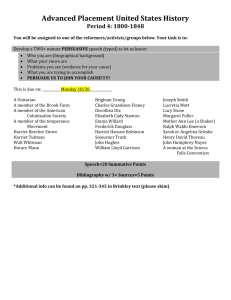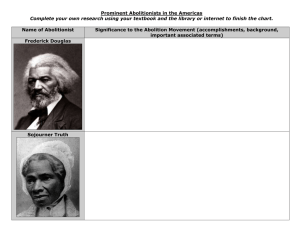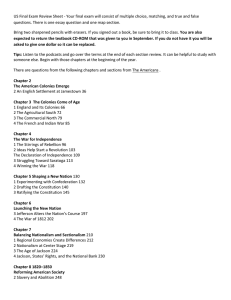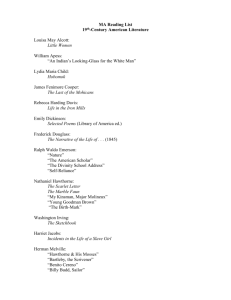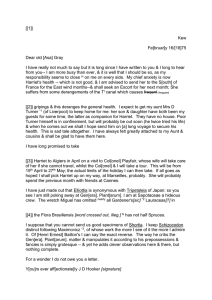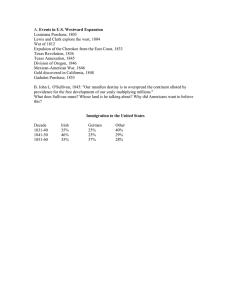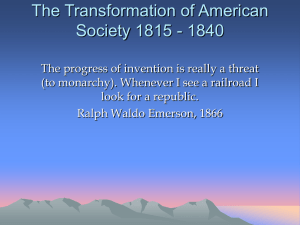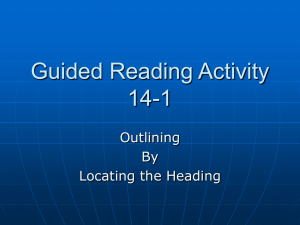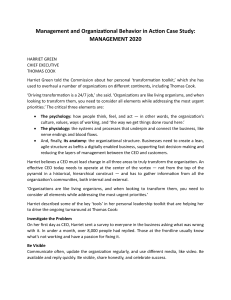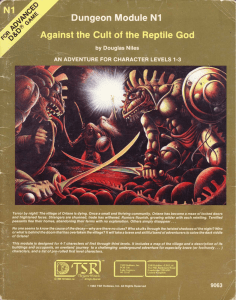Unit 3 Study Sheets-1301.doc
advertisement
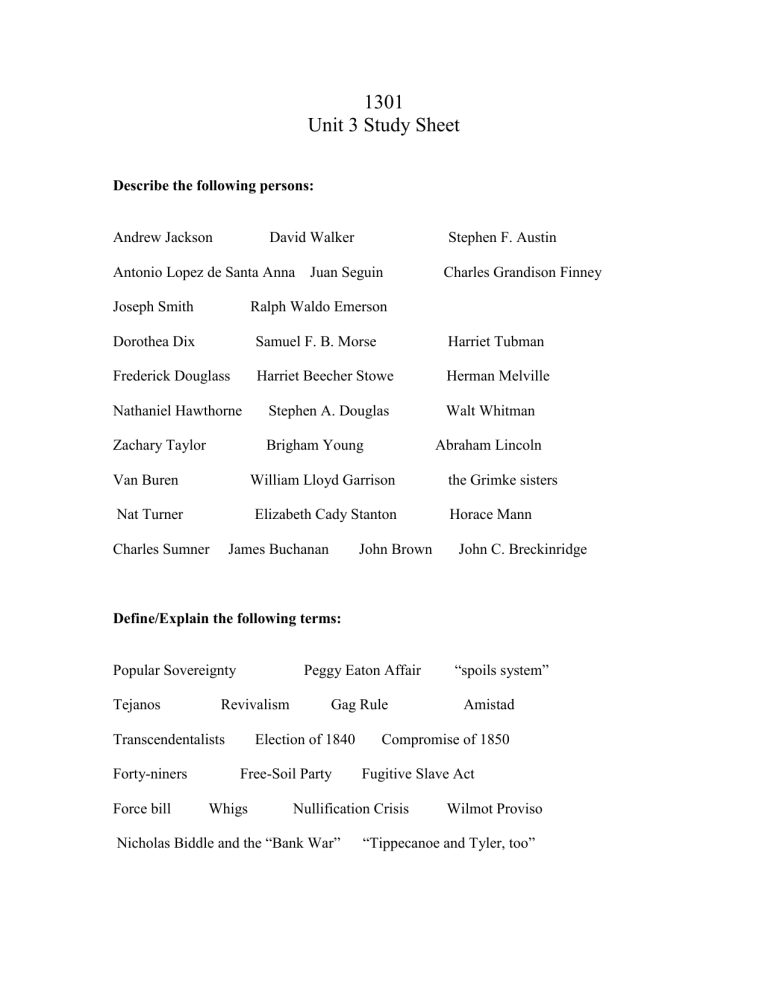
1301 Unit 3 Study Sheet Describe the following persons: Andrew Jackson David Walker Stephen F. Austin Antonio Lopez de Santa Anna Juan Seguin Charles Grandison Finney Joseph Smith Ralph Waldo Emerson Dorothea Dix Samuel F. B. Morse Harriet Tubman Frederick Douglass Harriet Beecher Stowe Herman Melville Nathaniel Hawthorne Stephen A. Douglas Zachary Taylor Brigham Young Abraham Lincoln Van Buren William Lloyd Garrison Nat Turner Elizabeth Cady Stanton Charles Sumner James Buchanan Walt Whitman John Brown the Grimke sisters Horace Mann John C. Breckinridge Define/Explain the following terms: Popular Sovereignty Tejanos Peggy Eaton Affair Revivalism Transcendentalists Forty-niners Force bill Gag Rule Election of 1840 Free-Soil Party Whigs Amistad Compromise of 1850 Fugitive Slave Act Nullification Crisis Nicholas Biddle and the “Bank War” “spoils system” Wilmot Proviso “Tippecanoe and Tyler, too” Promised Land-Negro Sermons Free Blacks The American Colonization Society Bleeding Kansas Fort Sumter Kansas-Nebraska Bill Dred Scott Case Harper’s Ferry Panic of 1857 Yeoman Farmer’s filibustering Lincoln-Douglas Debates The American Anti-Slavery Society Mormon migration Gadsden Purchase Seneca Falls Convention Manifest Destiny Oneida Association Treaty of Guadalupe Hidalgo Know-Nothings Election of 1860 Short Essay: Please answer the following questions in complete sentences. 1. 2. 3. 4. Discuss Andrew Jackson’s Indian Removal Policy? Explain what the 1828 Tariff of Abominations was? What was the “Cult of Domesticity” or the “Cult of True Womanhood?” Over what issue did abolitionists disagree? What was the result of this disagreement? Long Essay: Please answer the following questions in two or more paragraphs. 1. Many southerners’ claimed that slavery was necessary and good, while most northerners disagreed. Explain their respective attitudes? 2. Discuss what life was like on the plantation for black slaves according to your textbook and your Jacobs monograph? Include characteristics of slave families, kinship and community. 3. Detail Texas’ progress from Mexican rule to independence and finally annexation by the United States in 1846. 4. How was the concept of internal expansion relative to the United States in 1830’s and 1840’s? Explain why the United States went to war with Mexico in 1846?
